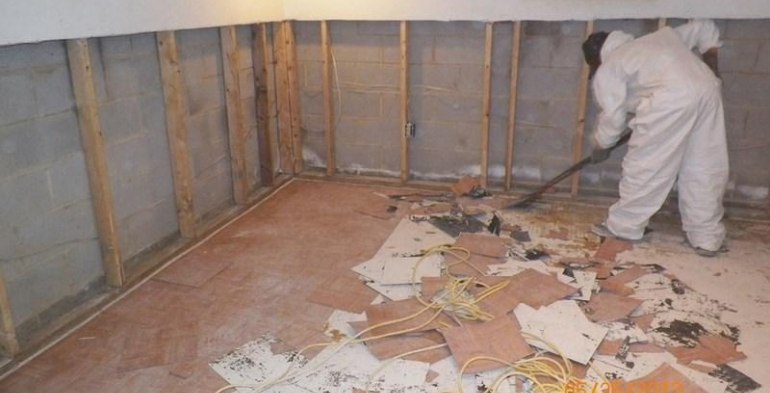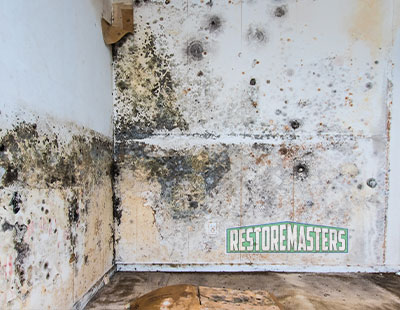Understanding the Health Dangers Connected With Mold Elimination in Your Home
Mold elimination in homes, while required for maintaining a healthy living atmosphere, lugs with it a range of health and wellness dangers that are typically undervalued. Comprehending these risks is vital, as mold and mildew exposure can lead to substantial wellness concerns, including allergic reactions and respiratory issues, which can be particularly extreme for at risk people. Mold Removal.
Common Mold Types and Dangers
Mold, a perilous existence in numerous environments, materializes in different forms, each with its very own set of dangers. Amongst the most usual types are Stachybotrys, Aspergillus, and Penicillium, which are frequently discovered in structures and homes. Stachybotrys, typically referred to as black mold and mildew, thrives in wet, cellulose-rich materials such as timber and paper. It is notorious for its possible to create mycotoxins, which can be especially uneasy in interior setups.
Aspergillus, a very versatile mold and mildew, can grow on a selection of surfaces, consisting of ceilings, fabrics, and wall surfaces. It prevails in both outside and indoor settings and can proliferate under diverse conditions. While not all stress of Aspergillus are damaging, some can launch irritants and toxic substances that might pose problems when inhaled or called.
Penicillium is another usual mold kind that is characterized by its rapid development and blue or eco-friendly look. It commonly colonizes water-damaged materials, including rugs, wallpaper, and insulation. The spores of Penicillium are easily airborne, making it a persistent threat in compromised indoor settings. Each of these molds needs careful recognition and monitoring to reduce potential threats efficiently.
Health Risks of Mold Direct Exposure
Understanding the types of mold and mildew and their possible threats establishes the stage for analyzing the wellness threats associated with mold exposure. Mold and mildew, a kind of fungus, can grow indoors and become a source of numerous health issues.
In addition, certain mold and mildews create mycotoxins-- additional metabolites that can be particularly unsafe when inhaled or consumed. Prolonged exposure to these hazardous mold and mildews, such as Stachybotrys chartarum, can cause more extreme health and wellness results, consisting of neurological troubles and jeopardized immune responses. Infants, the senior, and individuals with damaged immune systems deal with increased danger of significant health difficulties due to mold direct exposure.
Recognizing these wellness threats underscores the importance of addressing mold and mildew issues quickly and properly. Identifying the signs and potential long-lasting impacts of mold and mildew direct exposure is important in keeping a healthy interior environment and securing individual health.
Safe Mold Elimination Strategies

Detailed cleansing of mold-affected surfaces is important. Non-porous materials such as glass, metal, and difficult plastics can be scrubbed with water and cleaning agent. For porous materials like drywall or carpeting, disposal and removal are typically the most safe options, as mold can penetrate deeply. When making use of chemical mold eliminators or biocides, adherence to supplier guidelines makes sure efficacy and security.
Containment of the work area is an additional essential action. Securing off influenced zones with plastic bed linen stops mold and mildew spores from spreading out throughout elimination initiatives. Additionally, using HEPA vacuum cleaner cleansers and air cleansers can record airborne spores, lowering the link threat of breathing. By using these techniques, mold and mildew removal can be executed safely and successfully, minimizing carcinogen.
Protective Gear and Equipment
Efficient mold elimination requires using proper safety equipment and equipment to safeguard versus possible health risks. Mold and mildew spores, when disturbed, can become air-borne and position major respiratory issues and allergic responses. Individuals involved in mold remediation should prioritize personal security by furnishing themselves with appropriate safety gear.
Primary amongst safety equipment is making use of an N95 respirator or a much more robust mask, such as a P100 respirator, to stop inhalation of mold spores. These respirators are created to filter out at the very least 95% of air-borne bits, ensuring respiratory system protection. In addition, wearing gloves made of rubber, nitrile, or neoprene is critical to avoid skin call with mold and mildew and cleansing services.
Safety garments, such as non reusable coveralls or clothes that can be why not try this out conveniently washed in warm water, is likewise crucial to protect against mold and mildew spores from adhering to individual clothing. Safety goggles or full-face respirators shield the eyes from irritability triggered by mold and mildew direct exposure. In addition, to make sure thorough security, individuals need to make use of shoe covers or dedicate a set of footwear solely for mold and mildew removal jobs.
Employing these protective measures reduces the risk of health and wellness issues, highlighting the value of comprehensive prep work in mold and mildew removal initiatives.

Expert Vs. DIY Mold And Mildew Removal
Professional mold remediation services use experience, advanced devices, and extensive techniques to extensively get rid of mold and mildew while decreasing health threats. Professionals are trained to evaluate the level of the mold and mildew infestation accurately, identify surprise mold sources, and implement reliable control actions to prevent more spread.
In comparison, do it yourself mold elimination can be an economical choice yet commonly lacks the precision and thoroughness of specialist solutions. Homeowners might not have the necessary experience to identify all affected areas, potentially leaving behind mold and mildew that can grow back. In addition, inappropriate handling can exacerbate health and wellness dangers, as disturbing mold without appropriate protective gear can launch spores right into the air, boosting direct exposure.
Ultimately, the choice in between expert and do it yourself mold and click to read mildew removal ought to be affected by the range of the invasion, the health conditions of those in the house, and the house owner's capability to effectively take care of the remediation procedure without jeopardizing safety. Mold Removal. Prioritizing health and wellness and efficiency is extremely important in this choice

Conclusion
Mold and mildew elimination in domestic settings poses considerable wellness dangers, necessitating an extensive understanding of these risks to guarantee efficient reduction. Exposure to different mold types can result in respiratory problems and sensitive responses, particularly in susceptible populations. Utilizing safe elimination techniques and ideal protective gear, such as N95 respirators and gloves, is essential. Assessing whether to involve specialist solutions or take on a DIY technique is vital for optimal safety and efficiency in mold remediation initiatives.
Mold removal in homes, while necessary for maintaining a healthy living atmosphere, carries with it a variety of wellness risks that are commonly undervalued.Understanding the kinds of mold and their prospective dangers sets the phase for taking a look at the health dangers associated with mold exposure.Effective mold and mildew removal demands the use of suitable safety gear and equipment to guard against possible health and wellness threats. Expert mold and mildew remediation services provide expertise, advanced devices, and detailed strategies to extensively remove mold and mildew while reducing health dangers. Technicians are educated to examine the extent of the mold infestation properly, determine hidden mold sources, and apply effective containment procedures to stop additional spread.